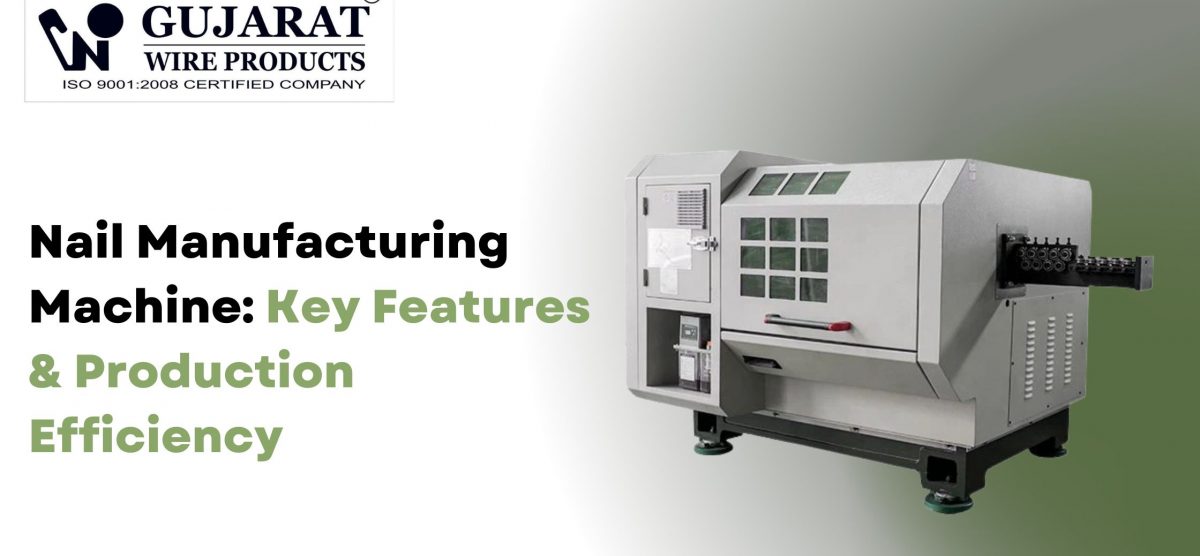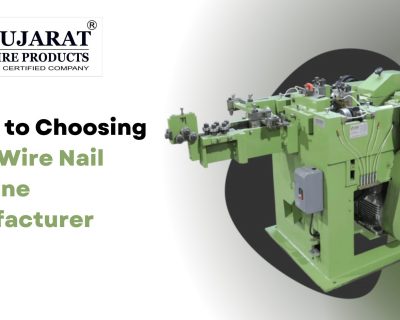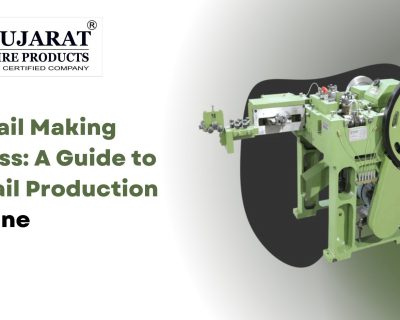Blog

Nail Manufacturing Machine: Key Features & Production Efficiency
Introduction
Most nail manufacturers focus on machine speed ratings while ignoring the metric that actually determines profitability: uptime percentage. A machine producing 600 nails per minute sounds impressive until unplanned stoppages reduce actual output to 400 nails per minute across a full production shift. Production efficiency isn’t about peak performance—it’s about maintaining consistent output through 16-hour days without quality degradation or mechanical failures. The gap between advertised capabilities and real-world performance separates profitable operations from struggling manufacturers burning through maintenance budgets. This guide breaks down the features that drive actual production efficiency, the technical specifications that matter beyond speed ratings, how design choices prevent the failures that kill uptime, and the maintenance protocols that determine whether machines last three years or fifteen years.
Critical Machine Components
Wire Feeding Systems
Synchronized feeding mechanisms pull wire from coils and deliver it to cutting stages at precise intervals. Variable frequency drives adjust feed speed based on wire diameter and material hardness. Inconsistent feeding causes length variations and incomplete nail formation.
Modern systems use tension sensors that provide real-time feedback to motor controllers. This prevents wire slippage that creates dimensional defects. Older fixed-speed feeders cannot compensate for material variations between suppliers, resulting in 5-8% defect rates versus 1-2% with adaptive systems.
Cutting and Shaping Mechanisms
Precision cutting dies determine nail length accuracy. Tungsten carbide dies maintain tolerances within ±0.1mm across millions of cycles. Standard steel dies wear 40% faster and require replacement every 300,000 cycles versus 500,000+ for carbide tooling.
The cutting action must complete before wire advances to the next position. Timing misalignment creates partial cuts and jams that stop production. Cam-driven systems provide mechanical timing reliability that electronic controls cannot match during voltage fluctuations common in many Indian manufacturing areas.
Head Forming Tools
Nail heads form through high-pressure stamping that compresses wire into flat, checkered, or duplex configurations. Die alignment precision determines whether heads center properly on the shank. Misalignment causes rejection rates exceeding 10% in quality-sensitive applications.
Quick-change head dies reduce specification switching time from 60 minutes to 15 minutes. This matters enormously for operations producing multiple nail types daily.
Efficiency Features That Actually Matter
Enclosed Frame Construction
Dust infiltration into bearing assemblies causes 60% of premature mechanical failures in open-frame machines. Enclosed designs with sealed bearings extend component life from 3 years to 10+ years in dusty factory environments typical across smaller manufacturing cities.
The cost premium for enclosed construction pays back within 18 months through reduced replacement parts and downtime elimination.
Automatic Lubrication Systems
Manual lubrication depends on operator discipline. Missed lubrication cycles cause bearing seizures that destroy gear assemblies and require ₹80,000+ repair costs. Automatic systems pump lubricant at programmed intervals regardless of operator attention.
This single feature reduces mechanical failures by 70% compared to manual lubrication machines.
Fault Detection Sensors
Wire break sensors stop machines instantly when feed material snaps. This prevents damage to cutting dies and head forming tools that occurs when machines continue running without proper wire feed. Sensor-equipped machines reduce die replacement costs by 50% versus manual monitoring systems.
Low lubrication alarms flag bearing failures before catastrophic damage occurs. Die wear indicators track cycle counts and prompt replacement before dimensional accuracy degrades.
Speed Versus Consistency Trade-offs
High-speed machines rated at 800 nails per minute operate at maximum stress levels. Component wear accelerates and maintenance intervals shorten. Machines run at 70% of maximum rated speed deliver longer service life with 30% lower maintenance costs.
The calculation changes for high-volume commodity nail producers where maximum output justifies accelerated wear. Small to mid-sized manufacturers serving diverse specifications benefit more from moderate-speed machines with quick-change tooling.
Energy Consumption Reality
Variable frequency drives reduce energy consumption by 20-30% compared to fixed-speed motors. A typical nail making machine draws 15-20kW during operation. Over 4,000 operating hours annually, VFD systems save ₹1.5-2 lakh in electricity costs at industrial tariff rates.
These savings compound over 10+ year equipment lifecycles, often exceeding the initial VFD premium by 5-8 times.
Material Waste Patterns
Precision cutting reduces wire waste from 8% to 2% of raw material consumption. At production volumes of 50 tons monthly, this 6% difference represents 3 tons of material savings worth ₹1.5-2 lakh depending on wire grade.
Head forming efficiency matters equally. Incomplete head compression creates rejects that cannot be recycled. Advanced cam systems reduce head defects from 4% to under 1%, translating to significant material recovery.
Maintenance Protocols for Maximum Uptime
Daily lubrication checks take 10 minutes and prevent failures costing 4-6 hours of production time. Weekly die inspections catch wear patterns before dimensional drift exceeds tolerances. Monthly calibration reviews maintain consistent output quality.
Operators need structured training. Untrained personnel cause wire breakage rates exceeding 8% through improper tension settings and feed adjustments. Trained operators maintain breakage under 2%, directly impacting material costs and uptime.
Die replacement timing determines efficiency. Running worn dies past recommended cycle counts reduces output quality and increases power consumption by 15-20% as machines work harder to form nails properly.
FAQs
What production speed should buyers target for mid-sized operations?
Machines producing 400-500 nails per minute provide the best balance between output and maintenance requirements for operations under 40 tons monthly. Higher speeds accelerate wear without proportional output gains.
How do frequency converters improve efficiency beyond energy savings?
VFDs enable synchronized motor speed matching between feeding and cutting operations, reducing wire breakage by 40% and eliminating the tension variations that cause dimensional inconsistencies.
Can machines handle varying wire quality from different suppliers?
Yes, adaptive tension systems compensate for hardness variations. However, extreme quality differences exceeding 15% in carbon content still cause processing difficulties. Supplier consistency matters.
What’s the realistic lifespan of properly maintained equipment?
Enclosed, automatically lubricated machines with quality bearings and dies operate 12-15 years with major component replacements around year 7-8. Open-frame machines with manual maintenance average 5-7 years before economical replacement.
Conclusion
Production efficiency emerges from design features that maintain consistent output through extended operating periods, not peak speed specifications that machines cannot sustain. The right feature set matched to actual operating conditions determines profitability.
Gujarat Wire Products engineers nail manufacturing systems designed for real production environments where uptime and consistency determine success. Our machines incorporate automatic lubrication, enclosed construction, adaptive tension control, and the fault detection systems that prevent failures before they halt production. Ready to achieve the efficiency your operation actually needs? Visitgujaratwireproducts.com or contact our application engineering team for a production assessment and equipment recommendation based on your specific operational requirements.




